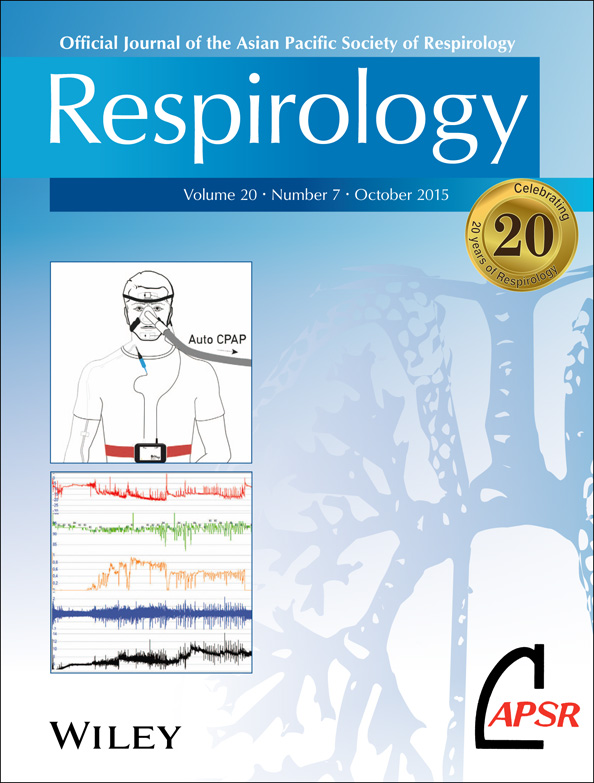Non-anaemic iron deficiency in COPD: A potential therapeutic target?
Abstract
Abbreviations
-
- COPD
-
- chronic obstructive pulmonary disease
-
- NAID
-
- non-anaemic iron deficiency
-
- PR
-
- pulmonary rehabilitation
Iron is a key element for mammalian survival, playing a major role in cellular bioenergetics and homeostasis. As a metal cofactor of several enzymes, including haemoproteins (such as haemoglobin, myoglobin and cytochrome c) and iron-containing non-haemoproteins, iron is involved in numerous crucial biological functions. Oxygen binding and transfer and aerobic metabolism via oxygen utilization in the mitochondrial respiratory chain are only a few of the reactions that haemoproteins are involved in, whereas several chemical reactions related to DNA synthesis and cellular proliferation are catalyzed by non-haem, iron-containing proteins.1, 2
As a consequence of its critical role in cellular respiration, iron deficiency would be expected to have a negative impact on aerobic metabolism and cell bioenergetics in both health and disease. Previous studies indicate that non-anaemic iron deficiency (NAID) is a predictor of exercise intolerance among individuals with no other chronic conditions,3 while NAID identifies those from the general population in a higher risk of mortality.4 NAID is also a prevalent co-morbidity with deleterious effects in several chronic disorders. In chronic heart failure, NAID is independently associated with increased disease severity, lower exercise capacity and reduced survival,5 whereas in patients with idiopathic pulmonary arterial hypertension, NAID is a predictor of worse clinical outcomes and exercise impairment.6
Chronic obstructive pulmonary disease (COPD) is a chronic disorder characterized, not only by expiratory flow limitation, but also by several systemic manifestations, so NAID may well be relevant. First, systemic inflammation is a key pathophysiologic element of COPD, resulting in enhanced retention of iron within the cells of reticuloendothelial system.7 During acute COPD exacerbations, repeated bursts of inflammation lead to a further distortion on iron homeostasis, resulting to its diversion from the circulation. Increased levels of inflammatory cytokines and disorders in the synthesis, release and activity of hepcidin, a peptide hormone that regulates iron homeostasis, both play a significant role in this phenomenon. As iron becomes unavailable for utilization, patients develop a functional iron deficiency, with or without anaemia.7 Second, congestive heart failure and pulmonary hypertension, which are common co-morbidities among COPD patients, are frequently complicated by NAID. Finally, iron deficiency might also be an absolute one; even though data on mineral intake among COPD patients are limited, a small study found that daily iron intake among COPD patients was about half that among age-matched controls,8 which could further contribute to a pre-existing functional iron deficiency.
Although NAID might be expected to be a frequent finding among COPD patients, there are currently no data in the literature regarding its prevalence and impact. The consequence of iron deficiency in these patients has to date been investigated only in the context of anaemia, which is itself quite prevalent among COPD patients. Anaemia has been shown to be an independent predictor of exercise limitation, dyspnoea, worse health-related quality of life and mortality;9, 10 however, only a percentage of chronically ill patients with iron deficiency present with concurrent anaemia,2 so these are two distinct entities that should be considered separately. In the presence of anaemia, low haemoglobin levels may result in lower exercise capacity and anaerobic threshold among COPD patients, due to decreased oxygen transfer to skeletal muscles.9 In the presence of iron deficiency without anaemia, exercise limitation might be a result of diminished oxygen utilization in the muscle cell due to impaired synthesis or function of implicated iron-containing enzymes; nevertheless, to what extent these disorders are manifested among COPD patients with NAID is currently unknown.
Pulmonary rehabilitation (PR) is a non-pharmacological, multidimensional intervention that has been established as the standard of care for the management of COPD by improving symptom severity, quality of life and exercise capacity.11 Although PR has a compelling evidence base, not all patients with COPD achieve a clinically significant improvement.12 This may be related to baseline characteristics, but many are not modifiable.13 The possibility that NAID might be a treatable factor influencing response is addressed by the study of Barberan-Garcia et al.14 published in this issue of Respirology.
The authors prospectively investigated the impact of NAID on the response of COPD patients to PR, for the first time. They found that NAID, defined as the presence of ferritin level <100 μg/mL or ferritin level between 100 and 299 μg/mL with a transferrin saturation of <20% and normal haemoglobin levels, was present in almost 50% of COPD patients referred for PR. At baseline, the NAID patients had lower gas transfer and were more likely to be current smokers. Moreover, NAID was an independent predictor of pre-training lower cycle endurance time and peak VO2. An intriguing observation was that COPD patients with NAID had a decreased training response, as established by the significantly lower increase in VO2 following PR, compared with patients with normal iron status. However, there were no significant differences in improvements in workload, cycle endurance time or 6-min walking test, so the clinical importance of this latter finding is rather unclear.
The study or Barberan-Garcia et al.14 certainly raises the question as to whether COPD patients with NAID could benefit from intravenous iron therapy. In this regard, the lessons learned from chronic heart failure seem to be quite appealing; correction of iron deficiency with intravenous iron among these patients was found to be beneficial in terms of symptom severity, functional class, exercise capacity, quality of life and morbidity, irrespective of the presence of anaemia.2 Prospective studies are now needed in order to establish the prevalence of NAID in wider populations and also to study the impact of correcting NAID among COPD patients. A novel therapeutic target for COPD is an appealing proposition; whether this can be true remains to be proven.




